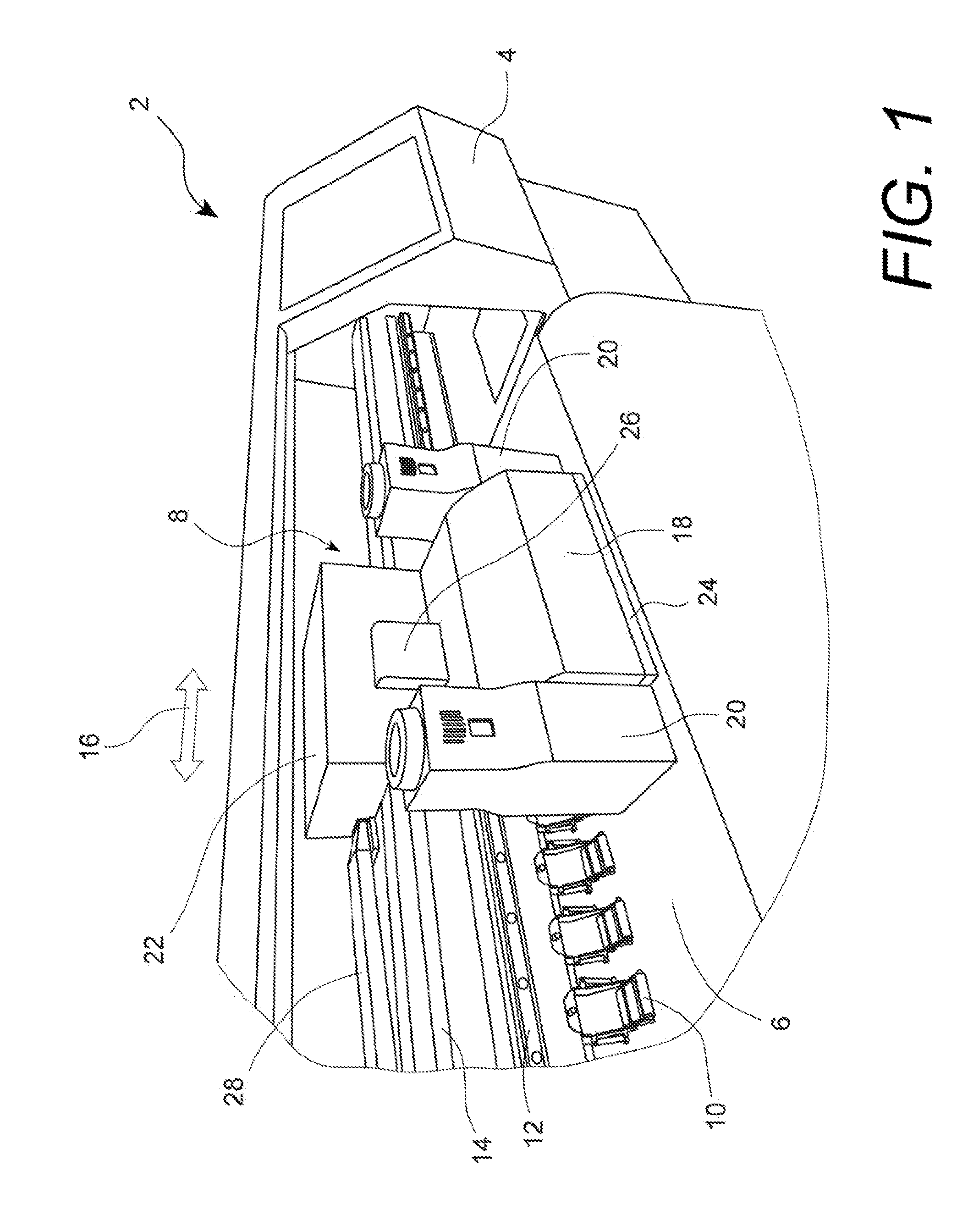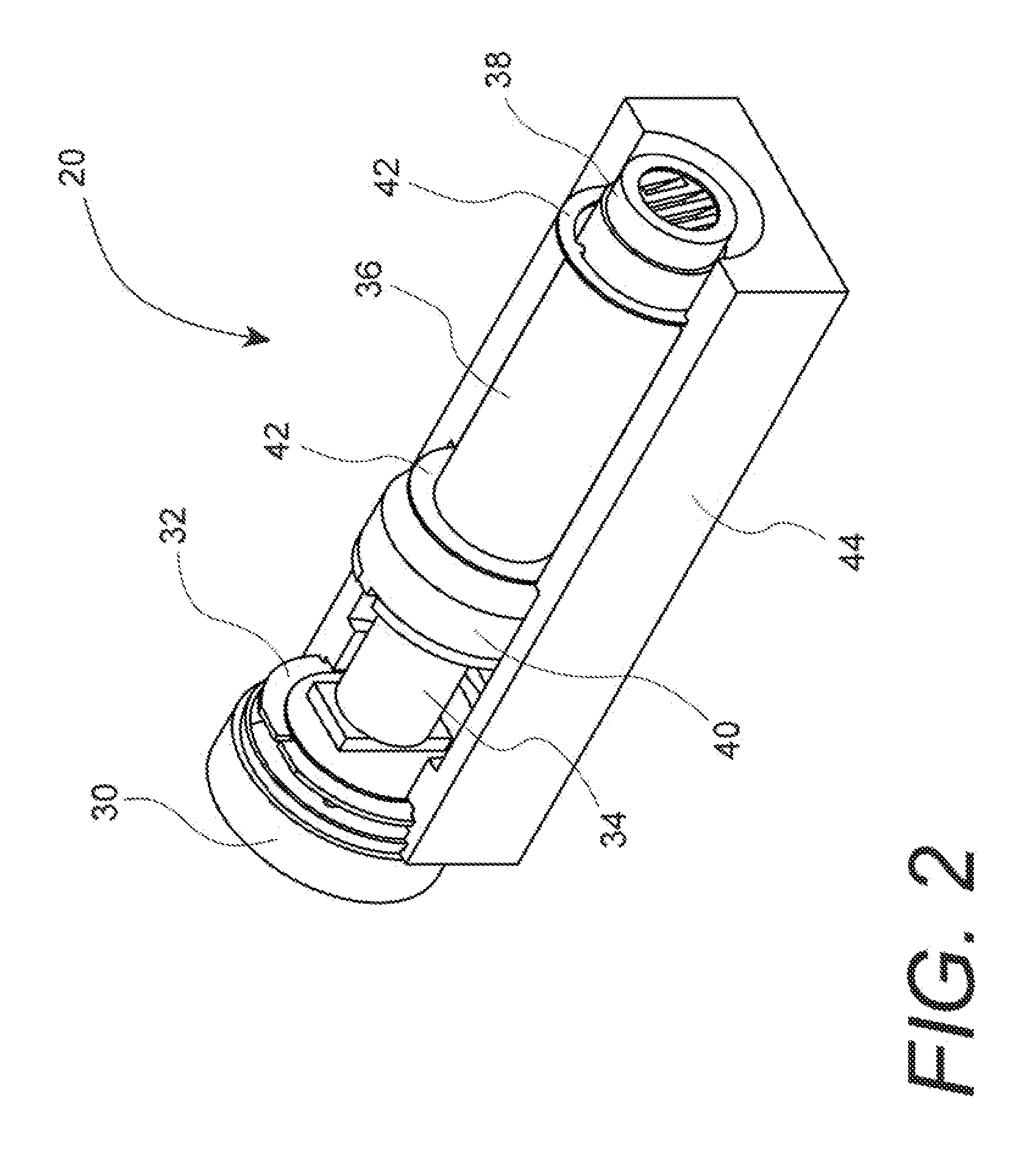Method and system for printing untreated textile in an inkjet printer
- Summary
- Abstract
- Description
- Claims
- Application Information
AI Technical Summary
Benefits of technology
Problems solved by technology
Method used
Image
Examples
Embodiment Construction
[0028]The present description will be directed in particular to elements forming part of or cooperating more directly with, methods and system in accordance with the present invention. It is to be understood that elements not specifically shown or described may take various forms well known to those skilled in the art.
[0029]Referring to FIG. 1, an example of a wide format textile inkjet printer 2 is partially shown with the front cover removed to reveal the modules and components that are critical for printing an image. A wide format or large format inkjet printer is typically floor standing and is capable of printing on media larger than A2 or wider than 17″. In contrast, a desk-top or an office printer typically prints on media sized up to 8.5″ b 11″ or 11″ by 17″, or the metric standard A4 or A3. Printer 2 has right side housing 4 and a left side housing (not shown) to enclose various electrical and mechanical components, including a main PC board (not shown) and ink supplies of ...
PUM
 Login to View More
Login to View More Abstract
Description
Claims
Application Information
 Login to View More
Login to View More - R&D
- Intellectual Property
- Life Sciences
- Materials
- Tech Scout
- Unparalleled Data Quality
- Higher Quality Content
- 60% Fewer Hallucinations
Browse by: Latest US Patents, China's latest patents, Technical Efficacy Thesaurus, Application Domain, Technology Topic, Popular Technical Reports.
© 2025 PatSnap. All rights reserved.Legal|Privacy policy|Modern Slavery Act Transparency Statement|Sitemap|About US| Contact US: help@patsnap.com



